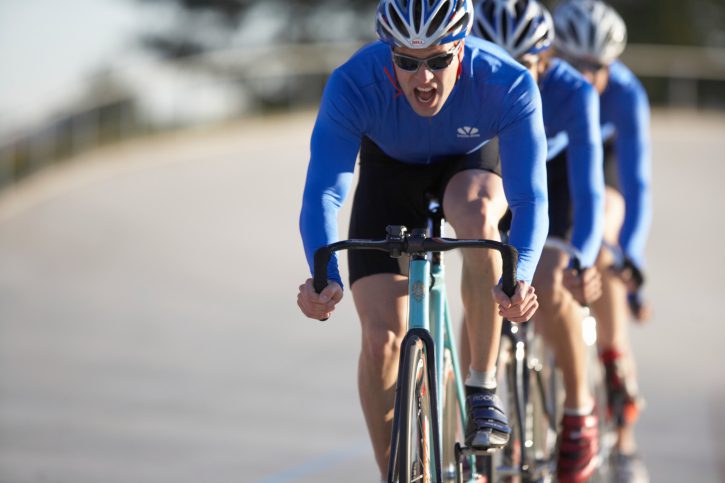Melanie McQuaid’s late season bike build

Having a long break between races in the late season is the perfect time to top up the aerobic engine and make big gains in your aerobic fitness in training. Although building aerobic fitness with volume seems less exciting than cranking out speed repeats, longer term development relies on your aerobic training. Speed can be developed in far less time than true aerobic fitness, so this kind of aerobic development work goes into the proverbial bank for you to draw on in the future.
If a half Ironman is raced at approximately 80 to 85 per cent of functional threshold and for Ironman about 68 to 78 per cent, creating a bigger number to carve out your percentage at race effort is a very desirable outcome. Building threshold with quality aerobic training at just below threshold intensity will improve your durability in long events since you can do more hours of it. More hours spent closer to race pace without burnout result in much faster long course racing.
Mixing volume with intensity challenges your body’s ability to recover well. This mini cycling build will focus the intensity on the bike below functional threshold but above what is considered easy aerobic training. The three day program will improve your threshold just as higher intensity intervals do, while also improving your fatigue resistance and muscular strength with the higher volume. The added benefit of quality aerobic training is that it will allow you to practice realistic race day nutrition strategies as your body will require appropriate fuelling to maintain the effort and to recover enough to repeat sessions.
To determine your functional threshold heart rate and power, the first day will feature a time trial. Functional threshold will fluctuate relative to your fitness during the year, so periodic testing is a great way to keep track of where you are at and readjust the targets you trying to achieve in each training session.
Day one: Two hour ride with a warmup including some one minute pickups. Then go into a 30 minute time trial at maximal effort. Take heart rate and power average for the last 20 minutes. Multiply by 0.95 to determine your functional threshold power (FTP) and functional threshold heart rate (FTHR) at this point in the season. Optional additional training would be a swim session.
Day two: Long ride (three to six hours depending on your current sustainable volume) with 70 per cent of the ride at 50 to 60 per cent of functional threshold power or 70 to 80 per cent of the heart rate associated with this value. You can do this as 20 minutes of effort and 10 minutes easy repeated for the duration of the ride. This effort is not so intense that you can’t hold a conversation, but does require focus to maintain the effort and will have a higher caloric demand. Staying on top of nutrition is paramount to the success of the ride and should be approached as you would for a race of similar duration. Alone, this ride may not be considered overly difficult, but if you bonk from lack of nutrition you will be unable to recover quickly. Optional additional training would be a short and easy transition run of about 30 minutes.
Day three: Another long ride to push your volume limits but riding at the same zone 2 effort as the day before. If you find you don’t have the energy to ride here then look to shorten accordingly. If you are strong, try to incorporate some hills so you start to ride short intervals in zone 3 some of the time to continue to challenge your aerobic system but focus on averaging the effort in zone 2 or 50 to 60 per cent of FTP. I like to do a long ride then circle back to my favorite hill to do repeats near the end of the ride, keeping the hill repeats in zone 3 and focusing on good pedaling technique and strength. After the ride, fuel as you would in a race with the option to attempt a run off the bike building to your zone 2 (about 70 per cent FTHR) as you progress.
Doing mini camps where your week can pop up 10 to 20 per cent higher volume than what you are accustomed to, can give you a big aerobic boost in late season. The longer you can ride at a zone 2 effort, the higher the percentage of your functional threshold you will be able to maintain during a race effort. Going back to aerobic training in the late season is highly effective as the weather is good, your motivation is high and your fitness to train at the higher end of your aerobic zone is greater. Add to that there is more time/light in the day to do longer sessions so late summer is a key period to prepare for your best racing of the year to appear in the fall.
A note when attempting this kind of work: when increasing volume to levels you aren’t accustomed to, be vigilant in how hard you are going as too much intensity can lead to breakdown. You will find that over time this work will make you faster without doing any flashy speed work. This means maintaining discipline in the first hour of your three to four hour ride to stay at zone 2 is important as by the fourth hour, if you were in high zone 3 or zone 4 you will struggle to maintain the intensity and certainly will struggle to recover to do it again the next day. Set your intentions, act accordingly and be patient. This is a potent workout for long term development if done correctly.
